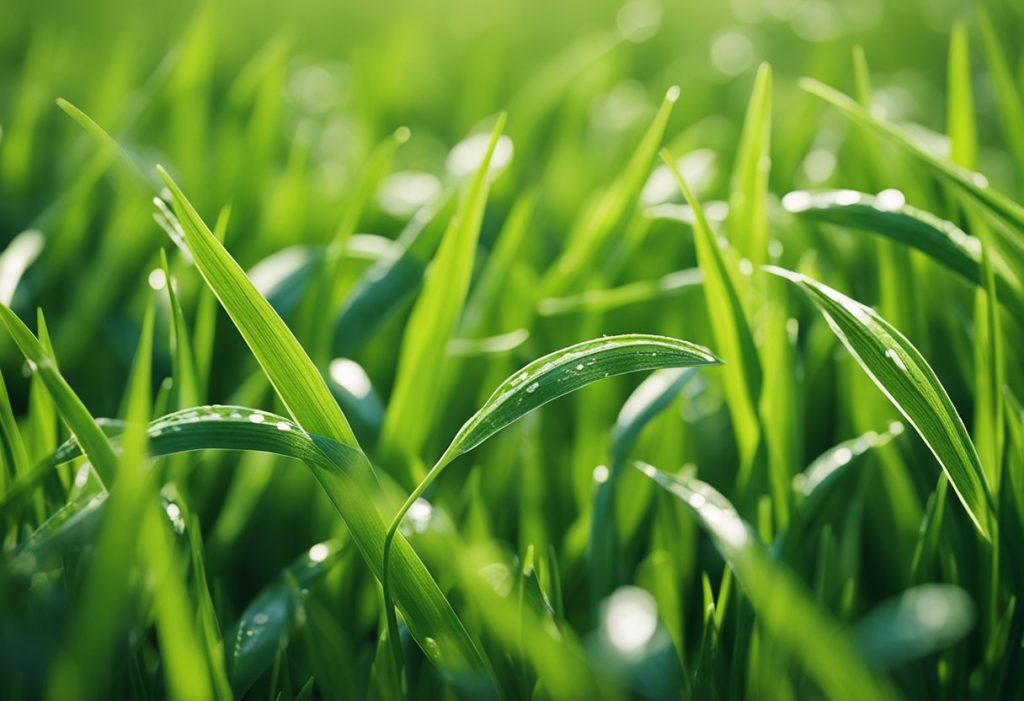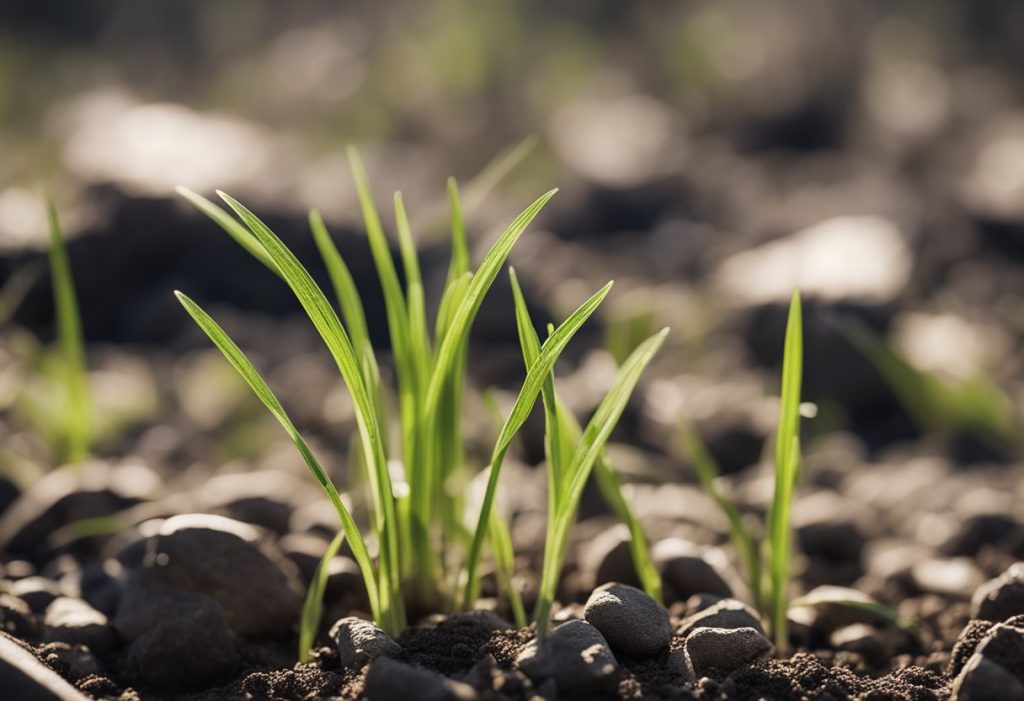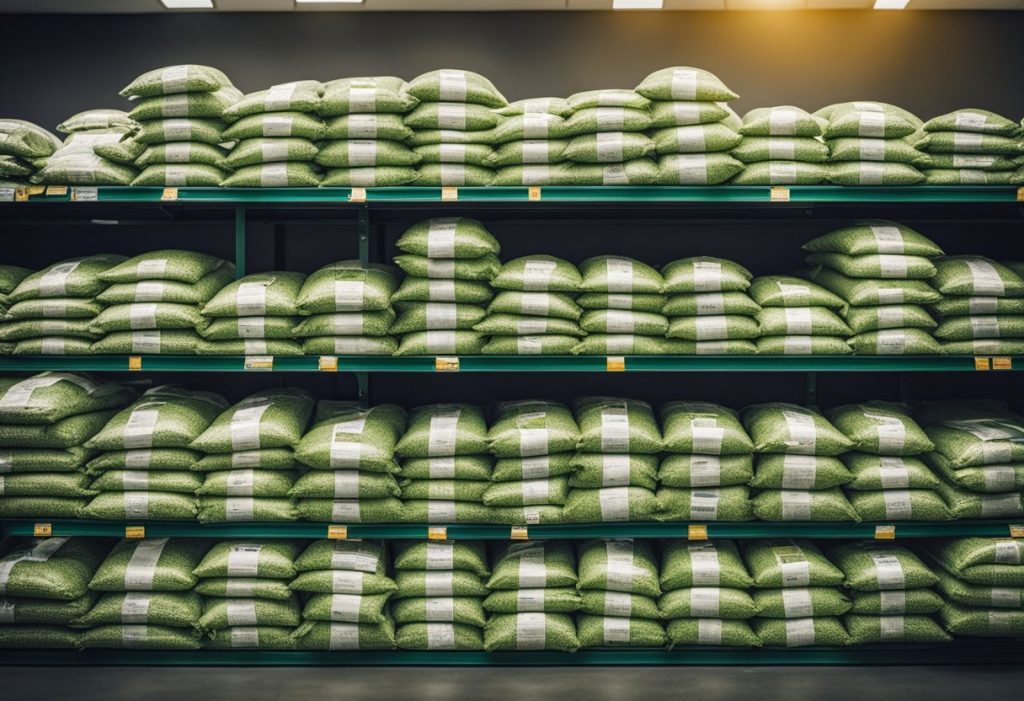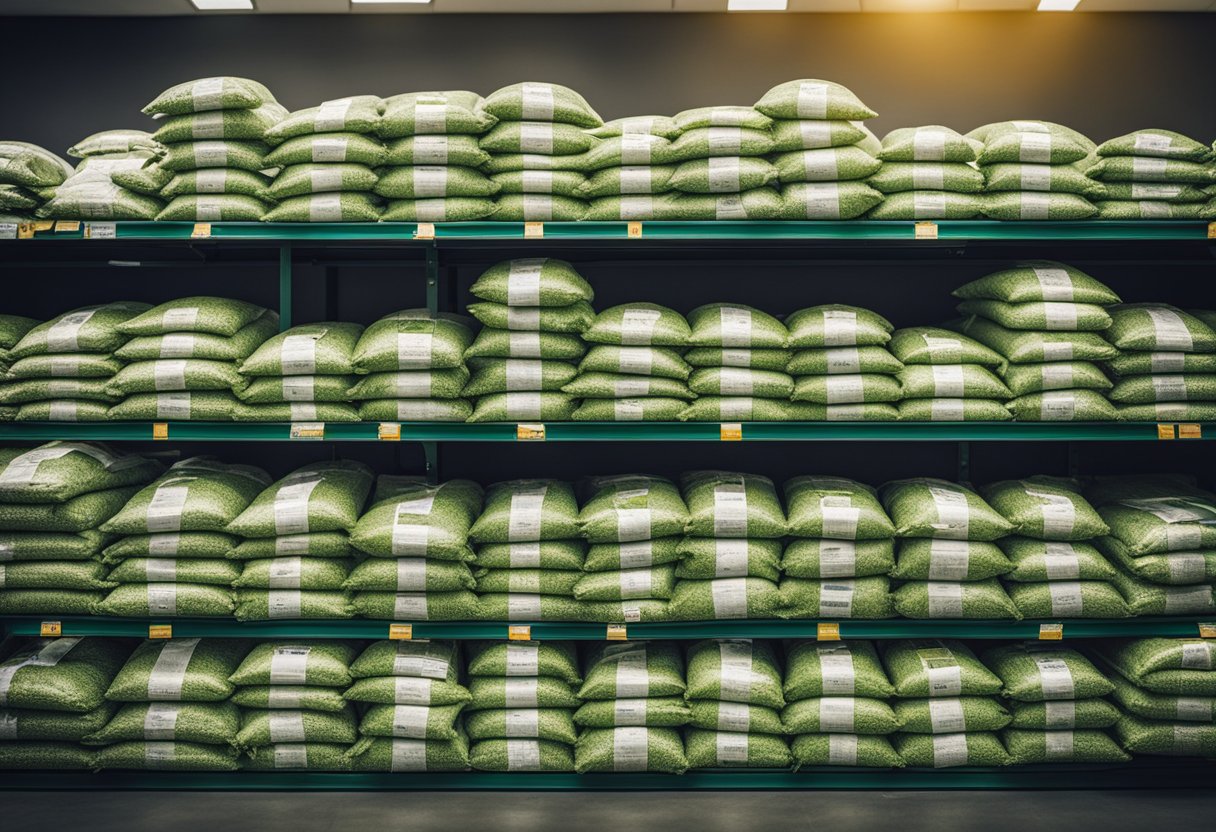Choosing the right grass seed for your lawn is essential for creating a lush, green outdoor space that can withstand Canada’s varying climate conditions. With a diverse range of seed types suitable for different regions and lawn preferences, understanding the options available will help you select the perfect mix for your needs. From all-purpose to premium blends, Canada offers a variety of grass seeds tailored to factors such as climate, soil type, and intended use.

Knowing when and how to sow your grass seed will make a significant difference in the success of your lawn’s establishment and growth. Be sure to choose the ideal time for seeding, taking into account factors like temperature and moisture levels. Additionally, proper preparation of the soil and an understanding of the best seeding techniques can provide a solid foundation for a healthy lawn.
Grass seed quality should not be overlooked, as factors such as germination rate, weed content, and species mixture play critical roles in the performance of your lawn. By sourcing high-quality grass seed from reputable suppliers, you can ensure your lawn will have a strong, consistent growth and a visually appealing appearance throughout the season.
Key Takeaways
- Selecting the right grass seed type for your region and lawn preferences is crucial for a healthy, vibrant lawn in Canada.
- Proper timing and technique for seeding plays a significant role in lawn establishment and growth.
- High-quality grass seed, sourced from reputable suppliers, leads to better performance and appearance of your lawn.
Understanding Grass Seed Types
When it comes to maintaining a lush, green lawn in Canada, choosing the right grass seed is essential. There are numerous types of grass, each with their own unique qualities that cater to a variety of climates and lawn conditions. In this section, we will discuss some of the most popular grass seed types suited for Canadian lawns such as Kentucky Bluegrass, Ryegrass, Perennial Ryegrass, and Fescues.
Kentucky Bluegrass is a top choice for many homeowners due to its deep blue-green colour, fine texture, and cold-weather hardiness. This grass thrives in full sun but can also tolerate partial shade. You’ll find that it is often used in home lawns, sports fields, and golf courses. Keep in mind that this grass type requires regular watering and mowing to maintain its appearance and health.
Ryegrass encompasses two main types: annual and perennial. Annual Ryegrass can be used as a temporary groundcover as it establishes itself quickly compared to other grass types. It’s quite tolerant of heavy foot traffic, making it well-suited for areas such as sports fields.
On the other hand, Perennial Ryegrass is a more long-lasting option. This grass species is noted for its fine texture, shiny-green appearance, and excellent tolerance of regular foot traffic. Perennial Ryegrass prefers well-drained soils and doesn’t fare as well in drought conditions, so you may need to water it regularly to keep it looking its best.
Fescues offer another group of grass seed choices. Fine Fescues are fairly low maintenance, with a fine texture and tolerance of shade, making them ideal for lawns with trees or other shady spots. Varieties such as creeping red fescue and chewings fescue are popular choices for their adaptability and shade tolerance.
Tall Fescue, on the other hand, is a more robust and drought-tolerant grass type, often used in lawns that receive heavy traffic or are in less favourable soil conditions. Make sure to select the right type of fescue for your lawn based on the specific requirements and your regional weather.
To achieve the lawn of your dreams, it’s important to carefully consider each grass seed type’s suitability for your specific lawn conditions and climate. By understanding the unique characteristics of Kentucky Bluegrass, Ryegrass, Perennial Ryegrass, and Fescues, you can make an informed decision when selecting the right seed for your Canadian lawn. Remember, a well-maintained lawn not only adds aesthetic value to your home but also provides a welcoming space for outdoor activities and relaxation.
Grass Seeding Tips and Techniques
Planting a new lawn from seed in Canada can be successful if you follow the right tips and techniques. When deciding on the type of grass seeds to use, consider the sun and shade requirements of your lawn. Cool-season grasses like fescue, ryegrass, and bluegrass are common in Canada and thrive in spring or early fall when soil temperatures are around 15 degrees Celsius.
Choosing the Right Time
Ideally, you should seed your lawn during spring or early fall, but it is possible to sow grass seed in winter by preparing your lawn properly. Scalp the lawn by lowering the mower to its lowest setting and mowing two to three times. As long as you have properly prepared the soil, the seeds will have a good base to grow.
Preparing the Soil
For sandy soil, amend the soil by mixing 5 cm of organic material into the top 15 cm of soil to improve its ability to grow grass. For all soil types, ensure even ground with a gentle slope and no low spots to promote healthy grass growth.
Fertilizing and Watering
Apply a starter fertilizer before seeding to provide essential nutrients for the grass. After spreading the seeds, lightly rake to mix them into the topsoil. Water the area thoroughly, ensuring the top 2.5 cm of soil remains consistently moist until the seeds germinate. Once the grass is established, water deeply and less frequently to promote strong root growth.
Optimizing Sun Exposure
Grass seeds usually require a minimum of six hours of sun exposure every day, but some varieties, such as fine fescue, can tolerate shade. Choose a grass type that suits the sun and shade conditions of your lawn for the best results.
Remember these tips and techniques for seeding your lawn in Canada, and you’ll be well on your way to a lush, beautiful landscape.
Ideal Conditions for Grass Seed Growth
As you work on establishing a lush and healthy lawn, understanding the ideal growing conditions for grass seed in Canada is crucial. Let’s dive into the different factors that contribute to successful growth, including temperature, soil pH, moisture, and soil type.
Temperature plays an essential role in grass seed germination. In Canada, cool-season grasses thrive when soil temperatures are consistently between 15° and 26°C. This makes September and October the perfect months to plant new seeds, as the warm fall temperatures and cool soil provide ample opportunity for the seeds to store nutrients before going dormant for the winter.
The soil pH is another crucial consideration. Most grass types prefer a slightly acidic soil with a pH range between 6.0 and 7.0. Maintaining this optimal pH balance encourages grass roots to absorb essential nutrients better and fosters overall lawn health. You can test your soil’s pH using a home kit or consulting a professional.
When it comes to moisture, adequate levels are vital for successful grass seed growth. Planting during the wet seasons, like spring and early fall, is preferable, as the soil is moist and cool enough to support germination and growth of cool-season grasses.
Selecting an appropriate soil type for your grass is also important. Loamy soil with good drainage and a healthy mix of silt, sand, and organic matter is ideal. Clay or sandy soils might require amendments to improve their structure, nutrient content, and water-management capabilities. Ideally, seeds should be planted about 1/4-inch deep, allowing them to establish strong roots without being buried too deep.
In summary, to grow a beautiful lawn in Canada, plant your grass seeds during the ideal temperature range in September and October, maintain a slightly acidic soil pH, and ensure proper moisture levels, optimal soil type, and correct planting depth. By considering these factors, you can create a thriving green space to enjoy for years to come.
Overcoming Challenges in Grass Seeding

When it comes to seeding your lawn, you may face a few challenges. But worry not! With a little bit of guidance, you can create a lush, thick lawn that keeps weeds at bay and maintains its beauty year-round.
One key aspect to focus on is choosing the right grass seed for your lawn. Opting for a high-quality product can make all the difference in preventing weed growth and ensuring a healthy, dense lawn. Incorporating 5% white clover seeds in your lawn seed mixture increases nitrogen content in the soil and promotes overall growth, according to Gardening at USask.
Proper soil conditions play a crucial role in successful grass seeding. Health Canada recommends loamy soil with a slightly acidic pH (6.0 to 6.5) for optimal growth. Good drainage and a minimum of six hours of daily sunshine are also important factors to consider.
When sowing your seeds, pay attention to the planting depth. Prograin suggests 1.5 inches depth for field sowing and 1 inch for No-Till planting in wet soil conditions. Planting too deep can lead to difficulties for seedlings in emerging from the soil and increase vulnerability to diseases and pests.
After seeding, keep the soil moist by watering every day for 1-2 weeks. Your patience will pay off when you see the seedlings reach 7.5 cm in height. At this stage, you can mow your lawn, but remember to only trim the top one-third of the grass blades. Scotts Canada advises adjusting your mower to a high setting to maintain a thick, healthy lawn that discourages weed infiltration.
By keeping these tips in mind and staying diligent in your lawn care routine, you’ll soon enjoy a vibrant, thriving lawn that is the envy of your neighbors. Happy gardening!
Recommendations and Product Overview

When selecting grass seed for your Canadian lawn, it’s important to consider the specific needs of your region and soil type. Canadian lawns can range from sunny to shady environments, so selecting the right grass seed for your conditions is crucial.
For sunny areas, Kentucky Bluegrass is an excellent choice due to its ability to thrive in both sunny and moderately shaded areas. Its premium quality helps it grow in high-density, winter-hardy, and heat-tolerant regions, making it a top pick in Canada. You can find Kentucky Bluegrass seed here.
If you have a shady lawn or need grass for areas with mixed sun exposure, consider a blend of grass seeds. For instance, in Nova Scotia, a mix of Kentucky Bluegrass, Creeping Red Fescue, Turf Type Perennial Ryegrass, Tall Fescue, Timothy, and Alsike Clover is preferred. This mix provides durability and aesthetic appeal while thriving in the regional climate.
One popular product in Canada is Scotts Canada grass seed. Their products cater to a variety of needs, including specific blends for sunny, shady, high traffic, and even all-condition areas. C-I-L Restore All Condition Grass Seed is another excellent option for Canadian homeowners, as it is designed to perform well in different environments. This seed can be found at The Home Depot Canada.
Remember, professional advice can make a big difference in the success of your lawn. Consulting with experts or utilizing resources from Health Canada can guide you in creating the perfect lawn for your home. They can help with planning, ideal grass selection, proper soil preparation, and optimal care for your specific conditions.
Enhance your outdoor space by choosing the right grass seed for your Canadian lawn, taking into account your region’s climate and available sunlight. Whether you opt for a specialized blend or a versatile all-condition solution, make sure it suits your specific needs. Happy gardening!
Frequently Asked Questions

What are the top grass seed varieties for Canadian lawns?
When selecting grass seed in Canada, consider choosing a blend of types. A mix can better tolerate various growing conditions and make your lawn less susceptible to pest damage (source). Some popular grass seed varieties for Canadian lawns include Kentucky Bluegrass, Perennial Ryegrass, Fine Fescue, and Tall Fescue.
When is the ideal time for planting grass seed in Ontario?
In Ontario, the best time to plant grass seed is typically in the late summer or early fall. During this period, the soil temperature remains between 16 to 24°C, which is conducive to proper germination (source). You can also sow seed in the spring when the ground is no longer frozen and has dried out sufficiently.
Which stores offer quality grass seed in bulk?
For quality bulk grass seed, consider purchasing from reputable home improvement stores like Home Depot or Lowe’s. Additionally, explore options at local garden centers and nurseries in your area. If you prefer shopping online, you may find bulk deals on websites like Amazon or specialized stores like The Grass People.
Where can I find grass seed on sale in Canada?
To find grass seed on sale in Canada, keep an eye out for discounts or promotions from your local garden centers, nurseries, and home improvement stores such as Home Depot and Lowe’s. You can also search for deals online at Amazon or other specialized gardening websites.
How can I choose the best premium grass seed for my region?
To choose the best premium grass seed for your region in Canada, first identify your specific needs, such as the level of sun exposure, foot traffic, and lawn maintenance you can provide. Then, research appropriate grass varieties suited for your region’s climate. Reach out to your local garden center or look for information online to assist you in making an informed decision.
Are there any tips for successful grass seed germination in Canada?
To ensure successful grass seed germination in Canada, follow these steps:
- Prepare the soil by removing debris, weeds, and rocks. Loosen the soil to a depth of 3 to 4 inches, and rake it smooth.
- Apply a starter fertilizer, following the product instructions.
- Sow the grass seed evenly, using a drop or broadcast spreader.
- Lightly rake the area to ensure good seed-to-soil contact.
- Keep the soil consistently moist during the germination period. Water regularly, but avoid overwatering.
- Wait for your lawn to reach a mowing height of about three inches before its first trim.
Happy planting!
